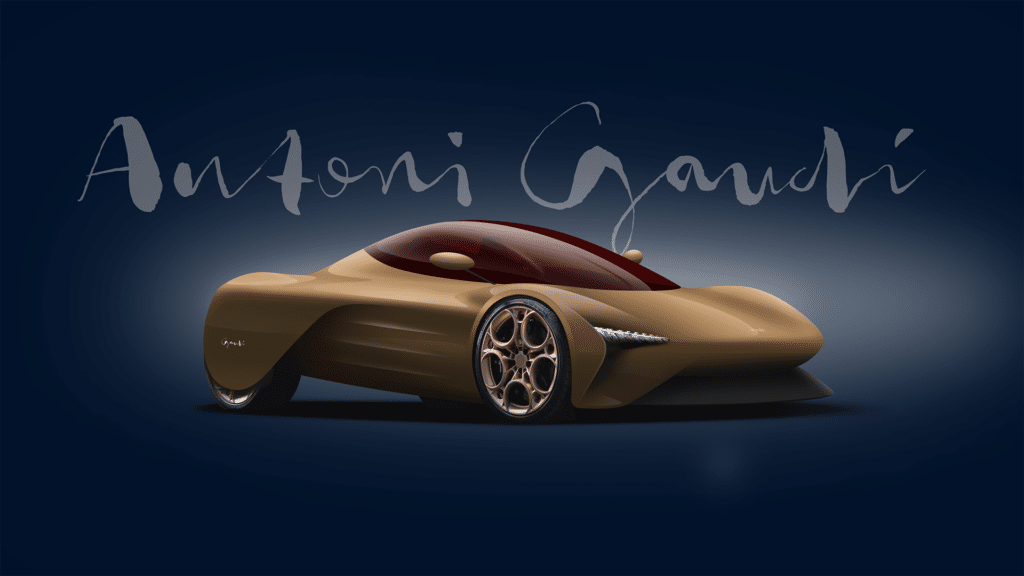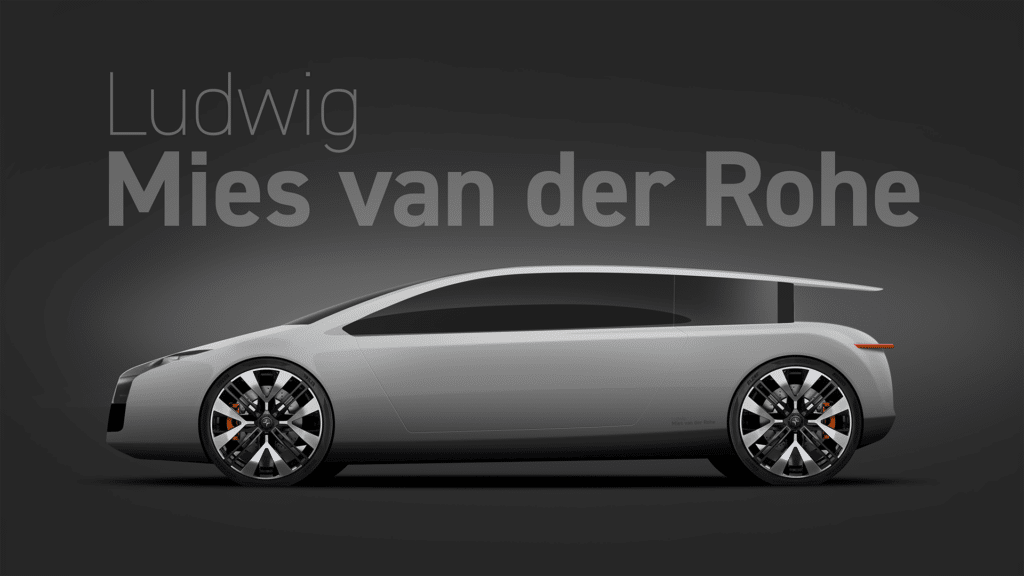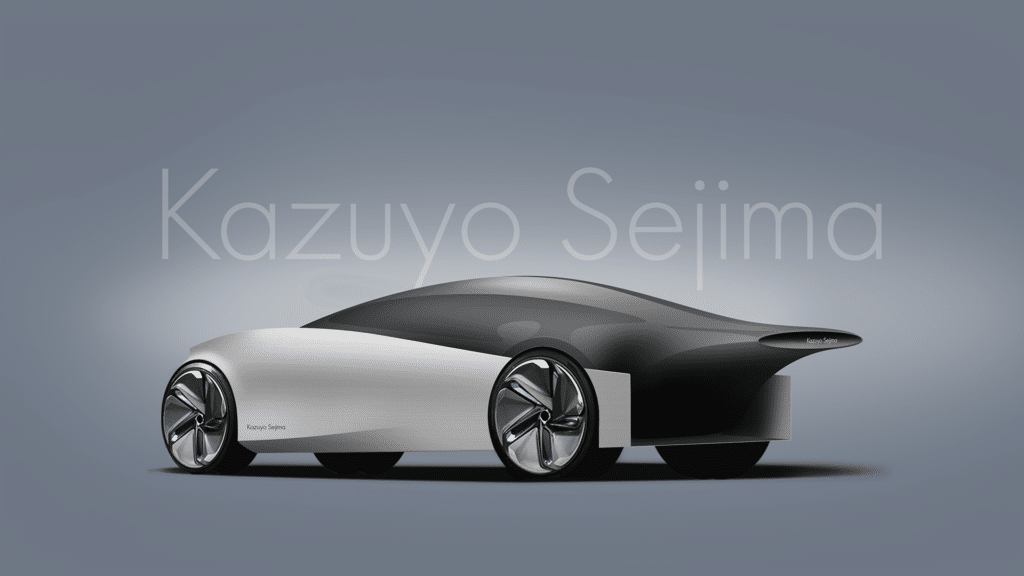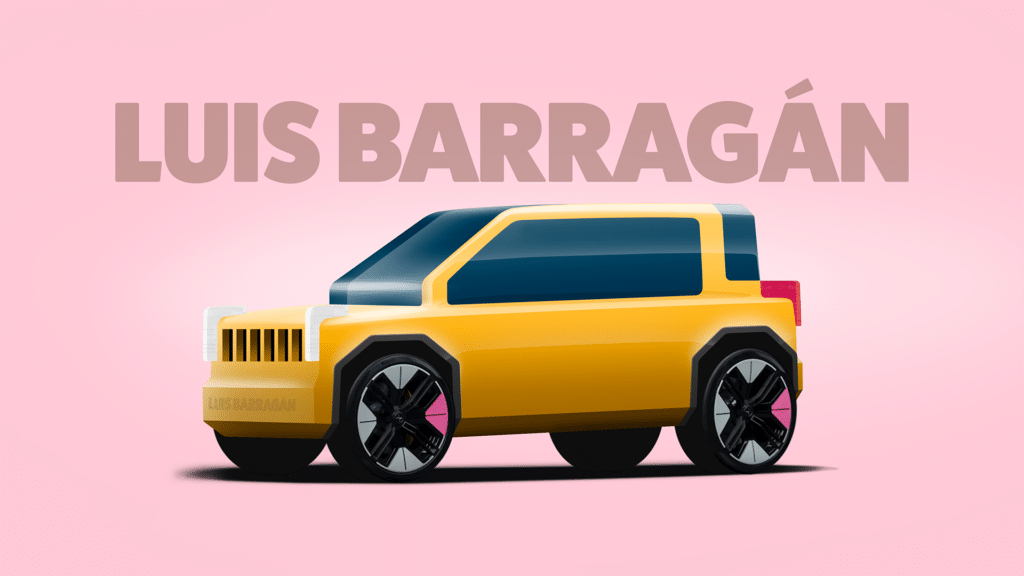How Might Famous Architects Design a Car if They Were in Charge?
Architects – like car designers – each have their own distinctive style for their work. While some are drawn to soft lines and subtle contrasts, others steer towards sharp detailing and bold choices. The differences in their work can be down to their varying backgrounds or could be influenced by their personal inspirations and motivations. This led us to wonder what it might be like if some famous architects created car designs using styles and techniques present in their work.
Here, we’ll showcase our hypothetical car designs in the style of architects like Gaudí and Barragán, alongside explaining their background and why we think they’d make these stylistic decisions and apply certain techniques.
Method
To create our car designs, we used a mixture of AI and extensive manual research to help us gather an understanding of the different styles, techniques and inspirations of four architects. From this, we’ve taken the main findings to design car concepts in their architectural styles.
Disclaimer: These designs are hypothetically based on some defining architectural styles. The architects referred to throughout are not affiliated with these designs or commentary in any way.
Antoni Gaudí
Antoni Gaudí was a renowned Catalan architect best known for his association with the Catalan Modernism movement. His work is famous around the world, with one of his most notable architectural masterpieces being the church of the Sagrada Família in Barcelona. He often drew inspiration from natural forms, using vibrant colours alongside intricate textures, patterns and sculptural details within his work. So what would it look like if this architect designed a car?

We envisage a car designed by this architect to involve soft organic sculpted surfaces and transitions, which is why our concept car features curves and seamless transitions stretching from the front bumper to the rear. Dramatic rear wheel spats almost covering the entirety of the two rear wheels add an element of interest and would also increase the aerodynamic capabilities of the vehicle by reducing drag. This modification was popularised in the 1940s, although it became less common over time for the majority of modern cars, with the exception of some supercars.
The soft surfaces and transitions are punctuated by sharp surfacing detail inspired by Gaudí’s tendency to lean into intricate sculptural details. From the gold alloy with interesting circular detailing to the silver headlight detailing and signature, these features combine his most-used architectural techniques in one unique concept.
The brown bodywork colour was chosen to represent Gaudí’s organic and natural inspirations present in his architectural work, and this contrasts with the deep-red stained glasshouse to give a pop of colour.
Ludwig Mies van der Rohe
With famous works such as Lafayette Park and the Barcelona Pavilion in his repertoire, Ludwig Mies van der Rohe was an architect renowned for his minimalist design principles characterised by simplicity, clean lines and an emphasis on functionality. His famous phrase ‘less is more’ perfectly encapsulates his link to the modernist movement. Below is how we think he might design a car in his architectural style.

Minimalism is at the centre of Ludwig Mies van der Rohe’s work, which is why we’ve made sure to showcase this in our hypothetical car design. At first glance, the design embodies minimalism with solid, clean lines across the bodywork, and front and rear bumpers. But the real star of the show is the vertical rear glasshouse with an extended roofline, which is a nod to the unique structure of van der Rohe’s iconic pavilions. From the alloys to the chassis, the geometric and architectural forms reflect the timeless nature of his architectural style.
Kazuyo Sejima
Kazuyo Sejima is a famous Japanese architect best known for her focus on minimalism and sleek designs. Simplicity, elegance and smooth-flowing designs are a huge part of her architectural style. She also considers how she can create a harmonious relationship between architecture and the surrounding environment with shapes and materials, which is a big inspiration for our car design concept.

For our Sejima-inspired car design, we’ve used contrasting metallic materials for the car bodywork and added an organic glasshouse. The fluid lines and movement are typical of her architectural style, but this also perfectly complements the harsh juxtapositions at play with the material choices. Meanwhile, the more structured and minimalist exterior bodywork is functional and alludes to Sejima’s embrace of technology within her architectural work. The bold metallic alloys are an innovative and ergonomic style choice, which reflects her attention to detail and focus on functionality while also creating sleek visual aspects.
Luis Barragán
Luis Barragán was a renowned Mexican architect known for his use of vibrant, striking colours and geometric forms. He also possessed a deep appreciation for light and space in his architectural designs, often manipulating these natural elements to create drama and interest. If Barragán were to design a car, this is what we think it would look like.

Since bold colours are often present in Barragán’s work, we’ve chosen to create a vibrant yellow car body with pops of pink on the silver alloys. These bold and punchy colour choices reflect his love of how light and shadows play a role in his work since the structure of the car would create these against the colours. The three-dimensional block-like headlights add something different to the design and this is cohesive with the overall building-block feel of the concept car.
We hope you’ve enjoyed delving into these four incredible architects and our car concepts based on their styles and techniques. At JTAPE, we’re proud to offer high-quality adhesives for body shop professionals to complete all types of jobs, from refinishing to attaching substrates for automotive modifications. To discover our full range of tapes, head to our website.


